The Ultimate Guide to Choosing the Perfect Tiny Wood Stove for Your RV
- October 16, 2023
- 0 comment
Tiny wood stoves have become incredibly popular among RV enthusiasts, and for good reason. They offer an excellent heating solution, keeping you warm and cozy during your adventures. In this comprehensive guide, I’ll share my expertise and insights, based on personal experience, to help you select the ideal tiny wood stove for your RV.
Importance of Tiny Wood Stove for RV
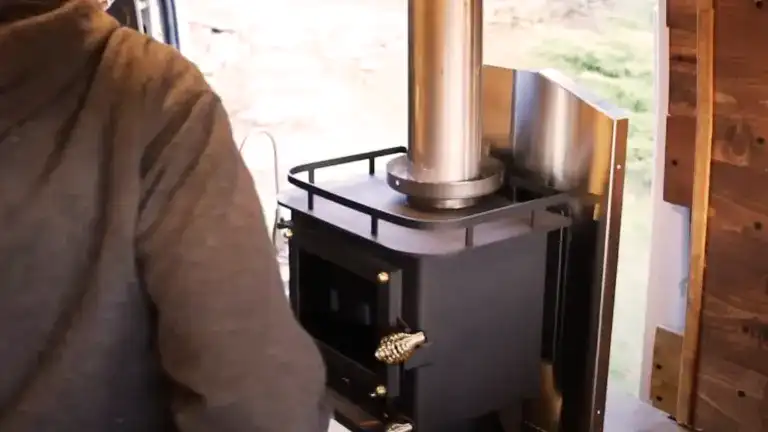
When you’re on the road in your RV, especially in colder months, having a reliable source of heat is crucial. A small wood stove for RV not only provides an efficient way to keep your RV warm but also adds a touch of rustic charm to your mobile home. If you’re considering a small wood stove for RV, let’s explore the factors you should consider when choosing the right one for your needs.
Types of Tiny Wood Stoves
I’ve come across a variety of tiny wood stoves, and they come in different styles. Some are traditional cast iron stoves, which are well-regarded for their durability and classic charm. On the other hand, there are more modern, compact models available that catch my eye. These modern stoves are appealing due to their enhanced efficiency and simpler installation process.
As an experienced RV enthusiast, I’ve had the opportunity to explore both traditional and modern wood-burning stoves suitable for RVs.
Traditional Wood-Burning Stove for RV
My go-to traditional choice is the Kimberly™ Wood Stove. Crafted from durable stainless steel, this stove modestly stands 25.5 inches in height and boasts a 10-inch diameter, making it an ideal fit for cabins, RVs, or tiny homes. This classic and highly efficient stove, crafted from cast iron, is perfect for RVs. It not only exudes a timeless charm but is also built to endure the rigors of RV life. Its compact design makes it an excellent fit for smaller RV spaces. Key features include exceptional durability, a small footprint, impressive heat output, and safety features such as a cool-touch handle and a removable ash pan. However, due to its weight, I’d recommend professional installation to ensure secure placement.
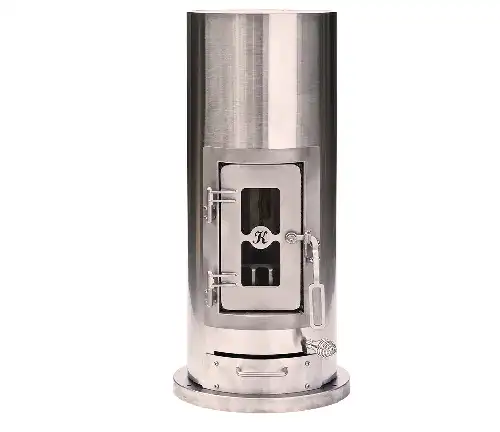
Modern Wood-Burning Stove for RV
For a more contemporary approach, I’ve found the Cubic Mini Grizzly Wood Stove to be an excellent choice. CB-1210 GRIZZLY Cubic Mini Wood Stove radiating a comforting glow. This compact yet powerful stove, measuring a mere 13 inches wide, 15 inches tall, and 12 inches deep, is a perfect fit for tiny homes, cabins, or RVs. Designed with efficiency in mind, modern wood stoves like the Grizzly are ideal for RVs. The Grizzly combines a sleek, modern aesthetic with functionality. It’s compact, highly efficient, and typically lighter, making it easier to install and transport. A standout feature is the air wash system, which keeps the glass clean, allowing you to enjoy the ambiance of a real wood fire. DIY installation is more feasible with modern stoves like the Cubic Mini Grizzly, designed with RVs in mind, but consulting a professional for safety and proper venting is still advisable.

These are just a couple of examples, and numerous traditional and modern wood-burning stoves are available for RVs. When choosing the right stove for your RV, take into consideration factors like your RV’s size, heating requirements, and personal design preferences. Both traditional and modern stoves have their unique advantages, so it’s essential to select the one that aligns with your specific needs and aesthetic preferences. Always prioritize safety and proper ventilation when using any wood-burning stove in your RV to ensure a safe and comfortable travel experience.
Size Matters
RVs come in different sizes, and so do wood stoves. It’s crucial to choose a stove that fits your RV’s available space without making it feel cramped. We’ll discuss how to measure your RV and select the appropriately sized stove.
Selecting the right wood stove for your RV is a vital step to ensure it fits your available space without compromising comfort and safety. Let’s go over the process of measuring your RV and choosing a stove of the appropriate size.
- Before you start shopping for a wood stove, measure the area where you plan to install it in your RV. The key measurements you’ll need are:
- Width: Measure the available width, which is the distance between the walls or any obstructions.
- Depth: Measure the depth of the space, from the wall to the furthest point you can safely install the stove.
- Height: Measure the vertical space from the floor to the ceiling or any overhead obstructions. Ensure you account for proper clearance requirements, which will vary depending on the stove model.
- It’s crucial to follow safety guidelines when choosing your wood stove size. The manufacturer’s instructions for your selected stove will specify the required clearances from walls, furniture, and combustible materials. Ensure there is adequate space around the stove to maintain safety and prevent any overheating issues.
- The BTU (British Thermal Unit) rating of the stove will indicate its heating capacity. Calculate the heating requirements for your RV, considering factors like insulation and your desired comfort level. A wood stove with too high a BTU rating can make your RV uncomfortably hot and lead to excessive fuel consumption.
- In modern RVs with limited space, you might consider compact, efficient wood stoves designed for small spaces. Some options are specifically built for RVs and are space-saving without sacrificing heating efficiency. These can be a great choice if space is at a premium.
- You also have the option of choosing between traditional and modern wood stoves. Traditional stoves tend to be bulkier and may require more space. Modern stoves often feature sleek designs and can fit well in smaller RVs.
- If you’re unsure about which wood stove size to choose, consult with an experienced RV wood stove installer or a professional at a reputable RV dealer. They can provide guidance and recommendations based on your specific RV model and requirements.
Heating Efficiency
As an RV owner, I know that keeping warm on the road is a top priority, especially when traveling during the colder months. Let’s delve into the heating capacity and technology used in tiny wood stoves to make sure you stay cozy throughout your journeys.
Heating Capacity (BTU Rating)
- My RV’s Heating Needs: First, I need to calculate my RV’s heating needs. I consider the square footage of my RV’s interior space and take into account the insulation and the weather conditions I’m likely to encounter. This information will help me determine the appropriate BTU rating required for my wood stove.
- Avoid Overheating: I understand that selecting a wood stove with too high a BTU rating can be counterproductive. An oversized stove can make my RV uncomfortably hot and lead to unnecessary fuel consumption. So, I need to make sure that the stove’s BTU output matches my specific heating needs.
Efficiency Technologies
- Catalytic Combustion: I’ve come across modern wood stoves that use catalytic converters. These converters burn wood more efficiently and reduce emissions, which is a win-win. This technology increases fuel efficiency and minimizes air pollution.
- Secondary Burn Systems: For many of the tiny wood stoves I’m considering utilizing a secondary burn system. This system is excellent because it helps to combust smoke and unburned gases, boosting the stove’s efficiency. It also reduces creosote buildup in the chimney and produces more heat.
- Adjustable Airflow Controls: I’ve noticed that some stoves have adjustable airflow controls. This feature allows me to fine-tune the combustion process, optimizing heat output and burn time. In the confined space of my RV, this level of control is invaluable.
Compact Design
- Fitting the RV Layout: Given the limited space in my RV, I’m on the lookout for wood stoves with compact designs. They need to fit seamlessly within my RV’s layout while still delivering the heating efficiency I need.
Safety Features
- Clearance Requirements: Safety is a top priority. I know I must follow the manufacturer’s guidelines for clearance distances to combustible materials, walls, and ceilings to avoid any accidents.
- Carbon Monoxide and Smoke Detectors: Installing carbon monoxide and smoke detectors in my RV is non-negotiable. These devices ensure early detection of any issues, providing peace of mind on the road.
- Quality Materials: Selecting a wood stove made from high-quality, fire-resistant materials is crucial. It reduces the risk of accidents and adds an extra layer of safety.
Proper Ventilation
I also understand that proper ventilation in my RV is vital. It allows for fresh air intake and the removal of combustion gases, ensuring a safe and healthy environment inside my RV.
By focusing on heating capacity, efficiency technologies, compact design, safety features, and ventilation, I can confidently choose the ideal wood stove for my RV, guaranteeing warmth and comfort during my travels, no matter the weather.
Safety First
Safety is paramount when dealing with wood stoves. We’ll guide you through the safe installation of your stove, as well as tips for using it responsibly to prevent accidents.
As a wood stove owner, ensuring fire safety is a top priority. Let me guide you through the process of safely installing your wood stove and share some personal tips on responsible usage to prevent accidents.
Proper Installation
- When it came to installing my wood stove, I didn’t take any chances. I hired a certified professional with experience in wood stove installations. Their expertise ensured the stove was correctly positioned, and all safety standards were met.
- I always follow the manufacturer’s guidelines for clearance distances. It’s a fundamental step in preventing fires and ensuring proper ventilation. These guidelines helped me make my RV safe and cozy.
- To protect my RV’s flooring, I placed my wood stove on a fireproof base or hearth. I chose a non-combustible material like tile to ensure safety and peace of mind.
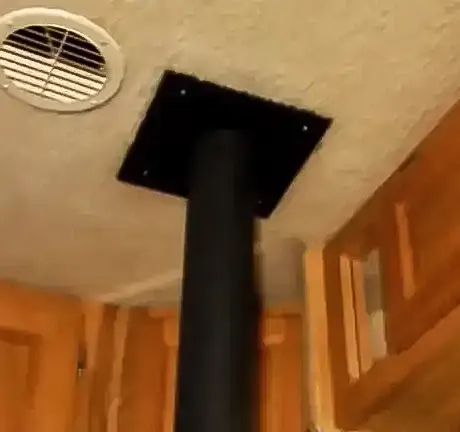
Ventilation and Chimney
- I can’t stress enough the importance of proper ventilation. It allows fresh air intake and the removal of combustion gases. Without it, there could be a dangerous buildup of carbon monoxide and a decline in air quality inside my RV.
- The chimney installation was a critical part of the process. I ensured it complied with safety standards and the manufacturer’s recommendations. It’s secure, sealed, and extends above the roofline for safe smoke expulsion.
Responsible Usage
- I make sure to only burn dry and seasoned wood in my stove. Wet or green wood is a no-go as it creates excessive smoke, and creosote buildup, and decreases efficiency.
- Regular Cleaning: Maintaining a clean stove and chimney is essential. I clean them regularly to prevent creosote accumulation, which is highly flammable. It not only enhances safety but also keeps my stove running efficiently.
- Monitor the Stove: I never leave my wood stove unattended while it’s burning. Continuous monitoring is key to ensuring it’s operating safely and efficiently.
- Maintain Smoke Detectors: Carbon monoxide and smoke detectors are installed in my RV. I take the time to check the batteries regularly to ensure they are in working order. Safety is a top priority for me.
Fire Extinguisher
- I always keep a fire extinguisher in my RV and make sure it’s in good working condition. Knowing how to use it is crucial in case of a fire emergency.
Safe Practices
- I’ve made it a point to teach everyone traveling with me about the safe operation of the wood stove and fire safety practices. Knowledge is safety.
Emergency Plan
- Finally, I’ve developed an emergency plan in case of a fire incident. Knowing how to exit the RV quickly and having a designated meeting point for all occupants provides an extra layer of safety and peace of mind.
Fuel Sources
Tiny wood stoves can run on various fuel sources. Learn about the pros and cons of wood, pellets, and multi-fuel options, and choose the one that suits your preferences and availability.
I’ve had to make choices about the fuel I use. Let me share my thoughts on the pros and cons of wood, pellets, and multi-fuel options based on my experiences and preferences.
1. Wood
Pros
- There’s something timeless and rustic about a wood-burning stove that I absolutely love. It adds character and warmth to my RV.
- When I’m in wooded areas or places where firewood is abundant, wood is an excellent, cost-effective fuel option.
- I appreciate not being dependent on electricity or specialized fuel sources. Wood stoves offer a sense of self-sufficiency.
Cons
- I won’t deny that using wood requires effort. Splitting, stacking, and feeding the stove can be physically demanding and time-consuming.
- Wood stoves generate ash and need regular cleaning and maintenance to keep them running efficiently.
2. Pellets
Pros
- Pellet stoves are all about convenience. They use compacted wood or biomass pellets that are easy to store and load into the stove.
- Pellets burn cleanly and efficiently, producing less ash and delivering a consistent heat source.
- Many pellet stoves have automatic feed systems, which means I don’t have to constantly tend to them.
Cons
- Depending on where I’m traveling, finding pellets can be a challenge. Their limited availability might not make them a practical choice.
- Some pellet stoves require electricity to operate, which can be a drawback when I’m in remote areas without reliable power sources.
3. Multi-Fuel
Pros
- Multi-fuel stoves offer the best of both worlds, allowing me to burn wood, pellets, and sometimes other biomass materials. This flexibility is a significant advantage.
- These stoves are highly efficient and provide consistent heat, much like pellet stoves.
- Being able to switch between fuels gives me the flexibility to adapt to the available fuel sources during my travels.
Cons
- Multi-fuel stoves tend to be pricier due to their complexity and additional features, which can be a drawback.
- The multi-fuel system can be more intricate, requiring a learning curve for operation and maintenance.
- Like pellet stoves, multi-fuel stoves may need electricity for certain features, making them less suitable for off-grid situations.
In the end, my choice of fuel for my tiny wood stove is influenced by my specific needs and preferences as an RV owner. I adore the classic charm of a wood-burning stove and don’t mind the manual work, especially when I have easy access to firewood. For convenience and cleanliness, I turn to pellet stoves if pellets are readily available. Multi-fuel stoves, while versatile, come with a higher cost and complexity, but the adaptability they offer can make them a compelling option. It’s all about finding the right balance that suits my RV lifestyle.
Installation Considerations
Deciding whether to install your tiny wood stove yourself or hire a professional is a critical choice. I’ve been contemplating whether to go the DIY route or hire a professional. Let’s dive into the pros and cons of each option from my personal perspective.
DIY Installation
Pros
- I must admit that the potential to save on installation costs is appealing. Every penny counts in my budget.
- There’s a unique sense of satisfaction in completing a DIY project. It’s a chance to take control and be hands-on.
- I appreciate the flexibility of setting my own schedule for the installation. No need to rush; I can work at my pace.
Cons
- Here’s the concern – I’m no expert. Installing a wood stove requires a deep understanding of safety standards, clearances, and venting. I don’t want to compromise safety.
- Safety is a top priority. The thought of making a mistake during installation that could lead to fire hazards or carbon monoxide leaks is daunting.
- I can foresee that a DIY installation will consume a lot of time and effort. It involves research, planning, and physical labor.
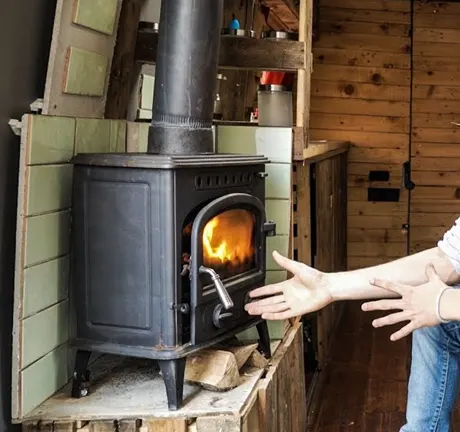
Professional Installation
Pros
- Professionals know the ins and outs of installation. They can ensure compliance with safety standards and manufacturer guidelines, offering peace of mind.
- I’ve invested in a quality wood stove, and I want to maintain its warranty. A professional installation is often a requirement to keep that warranty intact.
- Time is precious. Professionals can get the job done efficiently, reducing the downtime of my RV.
Cons
- Hiring a professional comes at a price. It’s an additional expense I need to consider, and it may stretch my budget.
- As someone who enjoys DIY projects and being hands-on with my RV, a professional installation feels less personally satisfying.
- Coordinating with a professional installer means I have to align my schedule with theirs, which could cause delays in getting my wood stove up and running.
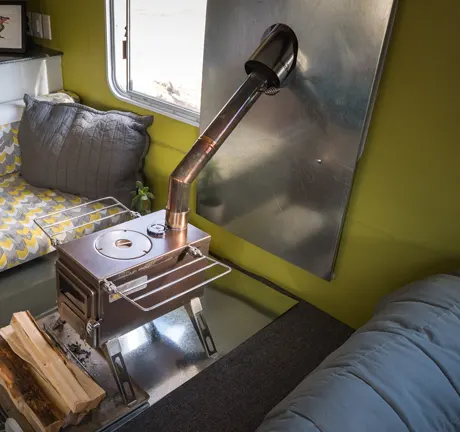
Maintenance and Cleaning
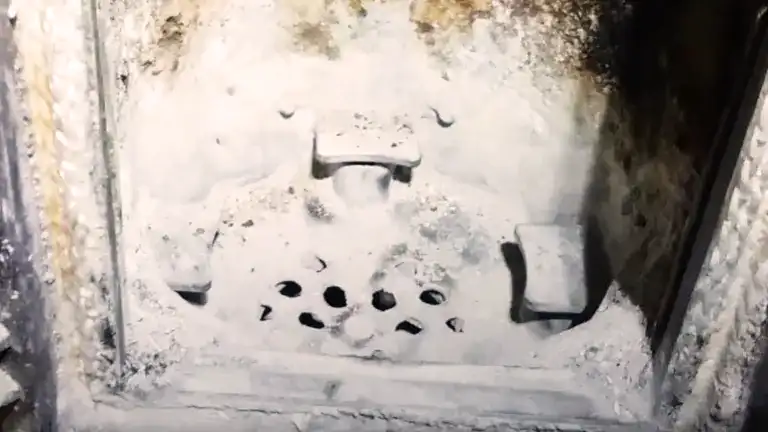
Maintaining your wood stove in top condition is crucial for both its longevity and efficiency. Here’s a condensed guide to the essential cleaning and maintenance tasks:
- Regular Cleaning: It’s important to regularly remove ashes from the firebox to maintain airflow and combustion efficiency. If your stove has a glass door, clean it regularly using special glass cleaning products or a water and ash mixture to keep it clear and aesthetically pleasing.
- Chimney Maintenance: Regular chimney cleanings are vital to remove creosote buildup, a flammable substance that poses a fire hazard. Ensure the chimney cap is free of debris to allow proper ventilation and prevent downdrafts.
- Gaskets and Seals: Inspect and maintain the door gaskets and seals. Any signs of wear or damage can lead to air leaks, impacting combustion efficiency. Replace damaged seals to preserve airtight combustion.
- Clear Air Passages: Keep air vents free from obstructions and clean any creosote deposits to ensure proper airflow and effective combustion.
- Stovepipe Cleaning: Regularly check the stovepipe for creosote buildup, cracks, or damage, as this can be a fire hazard.
- Wood Selection: Use only dry, seasoned wood for burning. Wet or unseasoned wood creates more creosote and hampers stove efficiency.
- Seasonal Maintenance: Conduct a thorough inspection of your wood stove before the heating season begins, addressing any loose or damaged parts.
- Professional Check-Up: An annual inspection by a certified technician can help identify and resolve issues that might have been overlooked.
- Safety Precautions: Ensure the installation of working carbon monoxide and smoke detectors in your RV and keep a fire extinguisher readily available for emergencies.
- Reference the Manual: Always follow the manufacturer’s specific cleaning and maintenance instructions detailed in your wood stove’s manual.
Proper cleaning and maintenance are essential not only for the efficiency and longevity of your wood stove but also for safety. By following these guidelines and conducting regular inspections, you can enjoy a warm and secure environment while extending the life of your wood stove in your RV.
Additional Features
Discover additional features that can enhance your RV heating experience, such as built-in fans, thermostats, and stoves with cooking capabilities. As an RV owner who values a warm and cozy interior during my travels, I’ve explored several additional features that can take my wood stove experience to the next level. Here’s my take on these options:
- Built-in Fans: I’ve come to appreciate wood stoves that offer built-in fans or the option to add them. These fans are real game-changers. They help to distribute the heat more evenly throughout my RV. By pushing warm air away from the stove and into the living space, these fans significantly improve the stove’s heating efficiency. Plus, some are powered by the stove’s heat, making them perfect for off-grid adventures.
- Thermostats: Thermostats are a fantastic addition to my wood stove setup. They provide the luxury of setting and maintaining a specific temperature in my RV. When the temperature dips below my desired level, the thermostat takes over, automatically adjusting the stove’s burn rate to ensure I’m always warm and comfortable. This feature not only adds to my comfort but also helps save on fuel by preventing overheating.
- Stoves with Cooking Capabilities: Being a cooking enthusiast, I love the idea of a wood stove that can do double duty as a cooking appliance. Some RV wood stoves come with built-in cooktops, giving me a versatile solution for heating and cooking. It’s a space-saving, multi-functional option that allows me to prepare hot meals and beverages while keeping my RV warm and cozy.
- Programmable Timers: For those who prefer a toasty RV upon waking up or returning from an outdoor adventure, a wood stove with a programmable timer is a convenient choice. I can set the stove to start heating at a specific time, ensuring I always step into a warm environment without wasting fuel.
- Remote Control: I’ve discovered that some modern wood stoves for RVs now come with remote control options. This feature offers a level of convenience that’s hard to resist. I can adjust the stove’s settings, including temperature and fan speed, right from my seating area. It’s a game-changer for ease and comfort.
- Integrated Air Purifiers: Air quality is a top priority for me, and I’ve found that some wood stoves now include integrated air purifiers. These systems help filter out impurities and maintain better indoor air quality while I keep my RV warm. It’s a peace of mind feature.
When considering these additional features, I think about what will make my RV heating experience more enjoyable and efficient. Each feature adds convenience and functionality to my RV heating system. It’s all about choosing the options that align best with my unique travel and lifestyle preferences.
Budget and Pricing
We’ll discuss various price ranges and help you find a tiny wood stove that meets your budget without compromising on quality. I’ve been on the hunt for the perfect wood stove to keep my travels warm and cozy. One cost-effective option that has piqued my interest is buying a used wood stove. Let’s dive into the details.
- My budget was set after considering the full scope of the project, including installation expenses, chimney materials, and any desired features. This initial step was essential to ensure I didn’t overspend. Wood stoves vary in price, primarily based on their size, material, and features. Here’s a general breakdown:
- Budget Range (Under $500): You can find smaller and more basic wood stoves in this range. They might lack certain features or be made of less expensive materials, but they can still provide effective heating.
- Mid-Range ($500 to $1,000): In this range, you’ll find a wider variety of wood stoves. They often come with additional features like built-in fans, better materials, and improved efficiency.
- High-End (Over $1,000): High-end wood stoves tend to be larger and offer advanced features like thermostats, integrated air purifiers, and multi-fuel capabilities. They are typically built to higher quality standards.
- The idea of a used wood stove held a certain appeal. It potentially allowed me to own a quality heating appliance without breaking the bank. However, there were a few factors to consider:
- Affordable Option: Buying a used wood stove is typically more budget-friendly than investing in a brand-new one. It’s an appealing choice for those looking to save some money.
- Quality Concerns: However, I was aware that the quality of a used stove could vary. It was essential to thoroughly inspect and research any used stoves I considered to ensure they were in good condition.
- I made a list of the features that mattered most to me. While some used stoves might lack certain modern features, I knew I could potentially find a pre-owned stove with the essentials I needed.
- Extensive Comparison: To find the best deal on a used stove, I dedicated time to comparing prices from various sources. Both local sellers and online marketplaces were part of my search.
- Second-Hand Stores: Thrift stores, antique shops, and local classified ads were worth exploring. You never know where a hidden gem might be found.
- Inspecting Carefully: Whenever I considered a used stove, a thorough inspection was a must. I checked for signs of wear, any missing components, and evidence of misuse. It was essential to ensure that the stove was safe and in working condition.
- While the used stove itself might be budget-friendly, I kept in mind that the overall budget also needed to accommodate installation costs. These costs included hiring a professional, purchasing chimney components, and ensuring I had all the necessary safety equipment.
- I looked beyond the immediate purchase and considered the long-term costs. While a used stove was a more affordable upfront choice, I thought about the stove’s efficiency and maintenance costs over time. Sometimes, investing a bit more in a newer, efficient stove could save money in the long run.
- Before making a final decision on a used stove, I did my homework. I researched different brands and models, read customer reviews, and sought recommendations from fellow RV enthusiasts. This step was essential to ensure I was investing in a used wood stove that met my heating needs while staying within my budget.
User Reviews
Life’s unexpected twists often lead to new adventures, just like the one that began with a casual chat with my best friend one sunny afternoon. We were discussing my RV and my plans to enhance its coziness for upcoming road trips when my friend suggested installing a wood stove. Initially skeptical, I was soon captivated by the idea of a warm, inviting atmosphere and the charm it would add to my RV.
Intrigued, I delved into research on wood stoves for RVs and discovered many others had successfully adopted this idea. My friend and I enthusiastically compared models and brainstormed installation plans, leading us to embark on a DIY project to fit a wood stove into my RV. With my friend’s experience in DIY projects, we installed it together, transforming my RV into a cozy haven.
The first time I lit the wood stove, it filled my RV with warmth and a sense of nature, reminiscent of campfires under the stars. This adventure, sparked by my best friend’s suggestion, added a new, cozy dimension to my RV journeys, making every trip more inviting and special. My friend’s simple tip did more than just warm my RV; it ignited a newfound joy in my travels.
Environmental Impact
For me, sustainability is a top priority, even when I’m on the road in my RV. So, when it comes to using a wood stove, I wanted to understand its environmental impact. I discovered that while wood stoves are a renewable energy source and produce fewer greenhouse gases, they do emit particulate matter, which can contribute to air pollution. To reduce my carbon footprint, I’ve committed to using dry, seasoned wood and ensuring that my stove is EPA-certified for cleaner combustion. Responsible burning practices and regular maintenance are also key steps I take to minimize my environmental impact.
Warranty and Support
Ensuring peace of mind as an RV owner is vital. That’s why I paid close attention to the warranty and customer support options when choosing my tiny wood stove. Different manufacturers offer varying warranty lengths and coverage, so I made sure to thoroughly read the warranty details and understand what it includes. Having reliable customer support can be a lifesaver in case of issues or questions, so I reached out to the manufacturer to clarify the support options available. It’s all about having that extra layer of security.
Where to Buy
Finding a trusted source for my tiny wood stove was crucial. I scoured both physical stores and online marketplaces. Trusted retailers who specialize in RV and camping equipment were my go-to, and I explored online platforms like Amazon, eBay, and specialized wood stove websites. Reading reviews and doing my due diligence to ensure the seller was reliable and offered quality products was a non-negotiable step in the buying process.
Tiny Wood Stove Accessories
To truly enhance my RV heating experience, I dived into exploring accessories. Heat shields, stove pipes, and hearth pads became my companions in creating a safer and more functional wood stove setup. Heat shields were a necessity to protect my RV’s walls and floors from excessive heat, while stove pipes ensured proper venting. Hearth pads not only added to the aesthetic but also safeguarded my RV’s interior from any embers or sparks. These accessories contributed to a more secure and efficient wood stove experience.
Conclusion
In conclusion, my journey to find the perfect tiny wood stove for my RV has been a blend of environmental responsibility, peace of mind, and enhancing the overall experience. It’s about choosing a wood stove that aligns with my values, providing warmth and charm during my travels, and taking steps to ensure its efficiency, safety, and eco-friendliness. This comprehensive guide has equipped me with the knowledge and confidence to make the right choice, making my RV adventures even cozier and more memorable.
Related Articles:
- RV Wood Stove Kit: Roof-Ready Flue Kits for Complete Van & RV Installations
- Tiny Wood Burning RV Stove Review 2023
- Small Cast Iron Stove for Terrace Mini Camping RV Wood Stove Review
- Silverfire Survivor Rocket Gasifier Camping Burning Wood Stove Review
FAQs
- Are tiny wood stoves safe for use in RVs?
Tiny wood stoves are safe when installed and used correctly, following safety guidelines. - What type of fuel is most efficient for tiny wood stoves in an RV?
Efficiency depends on your RV size and travel habits, but wood is a common and efficient choice. - Can I install a tiny wood stove in any RV?
The installation feasibility depends on the RV’s size and design. Consult with a professional for guidance. - Do tiny wood stoves produce a lot of smoke inside the RV?
When properly installed and used, they produce minimal smoke, thanks to efficient combustion. - What’s the average cost of a tiny wood stove for an RV?
The cost varies, but you can find options ranging from a few hundred to a few thousand dollars.
In summary, my journey through the world of tiny wood stoves for RVs has been enlightening and inspiring. I’ve learned how to make eco-friendly choices, prioritize peace of mind with warranties, discover reliable sources for purchasing, and enhance safety and efficiency with accessories. As I prepare for new RV adventures, I’m excited to create a cozy and environmentally responsible haven on wheels, making every journey a source of joy and warmth.


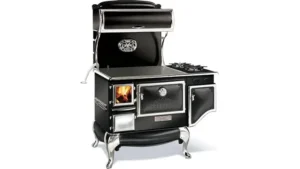
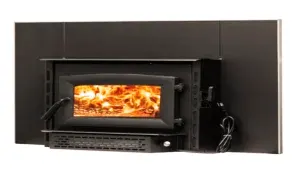

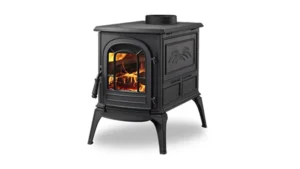
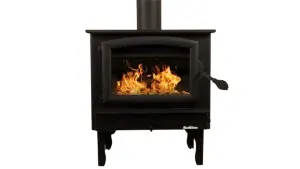



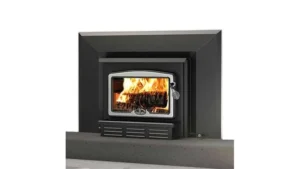
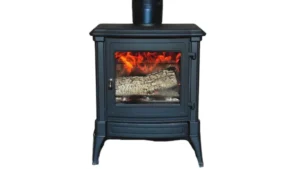
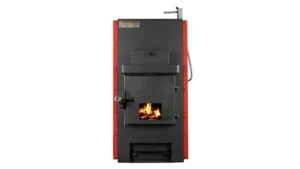
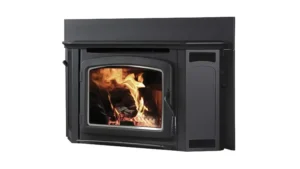
Leave your comment